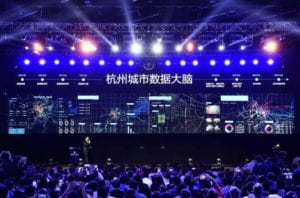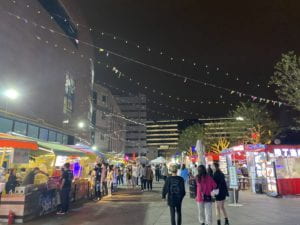There are fantastical promises of awe and freedom of telepathy in contemporary telecommunications, telemetric and smart-dust-sensor technology, and urban-sensor connectivity. Intelligent communication ecologies consist of clouds and oceans. The transcendental poetics of machines that anticipate human needs and commands are celebrated in Jennifer Gabrys’ text Telepathically Urban, which explores sensor architectures and mobile smart-dust, extending early-twentieth-century radio, electromagnetic transmission technologies, and the long history of utopian futurist aesthetics. Smartdust can be linked to a telepathic understanding of the nineteenth-century interest in atomized ether and atomic dematerialization, as well as to the future development of tiny neurobiological sensors of neural dust. The high ambience of smart sensors, accompanied by florid promises of telepathy, relates to the invention and reinvention of telecommunications as it is accompanied by the invention and reinvention of telepathy.
In 2018, the telepathy city was selected as one of the top 10 breakthrough technologies in the world by MIT Technology Review. The city has been upgraded to be an “intelligent body” capable of sensing environmental information and human behavior data, and artificial intelligence has become a powerful force for urban governance and sustainable urban development.
Hangzhou was regarded as a successful example in dealing traffic troubles with a urban brain. The “Urban Brain” can monitor 24 hours a day, and the command center can be notified within 20 seconds of abnormal events, and the accuracy rate can reach more than 95%. Some old cameras have poor picture quality, and fuzzy scenes that cannot be recognized by the human eye can be recognized by the machine. This reduces the workload of traffic road patrols and frees traffic police from the trivial task of monitoring and controlling.

Thanks to the “urban brain”, Hangzhou Xiaoshan District has achieved priority dispatch of 120 ambulances and other special vehicles. Once the emergency point receives the call, the “urban brain” will calculate in real time, automatically allocate the timing of the signal lights along the route, and customize a green light lifeline for the ambulance. According to estimates, the time for an ambulance to arrive at the scene can be reduced by half.

While Toronto was trying to build a much more smart city than Hangzhou. Google’s Sidewalk Labs worked with the Canadian government to plan to create a high-tech community, Quayside, and rethink how to build and operate a city.
However, such intensive urban data collection and the increasing number of automatic operations also leads to growing concerns about privacy protection and the potential harm to human life and health caused by machine errors.






